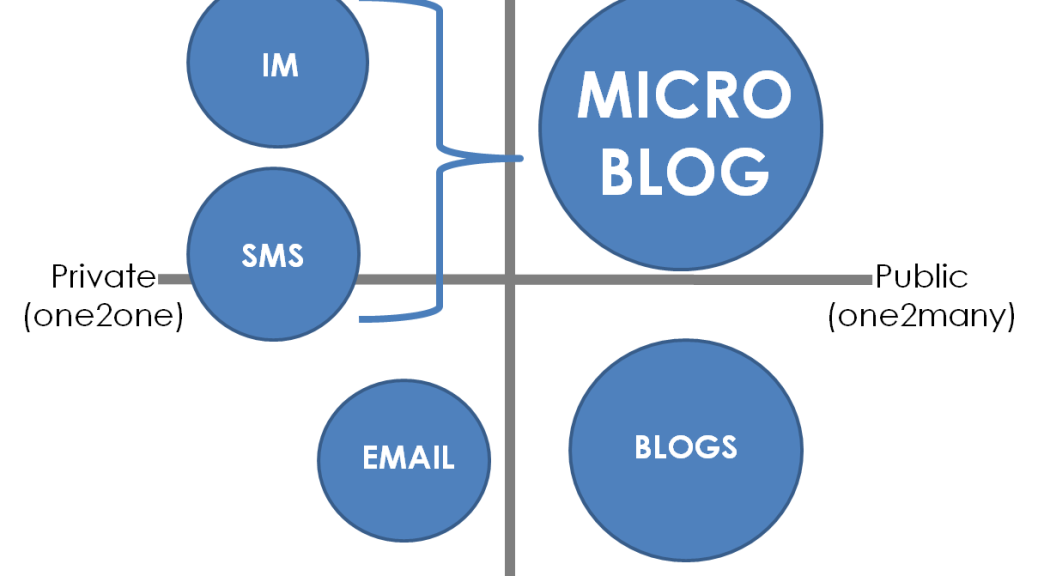In chapter 4, we are introduced to the world of micro-blogging and its attributes. While reading through this chapter I was able to learn about why micro-blogging is important, and how I can use it as a tool for success. Briggs adequately presents his views on micro-blogging and its uses through popular sites like Twitter.
What is micro-blogging? According to Briggs, micro-blogging is a service that creates ways for users to publish brief messages (usually 140 characters or less) with links to other media sites. An example of this is like posting a link to your favorite song on Facebook. You’re able to not only post your song link, but you can also write something about it. The idea of “ambient awareness” or “ambient intimacy,” is one that is centered on the ability to maintain a connection with someone without a phone or email.
Contrary to belief, there are many professionals that consider Twitter as a useful tool. For journalist, the main benefits of micro-blogging are learning about your audiences. With learning more about “the people,” you are able to somewhat better understand their preferences and dislikes. Briggs also explains that micro-blogging is a great way for professional journalist to gain feedback on their work. Marshall Kirkpatrick from ReadWriteWeb, even provided his opinion by discussing how micro-blogging is great for performing public interviews. This tool is one that helps build community, spread breaking news, and market brands.
Lastly, micro-blogging is a great resource that journalist can use to build their following. In addition, this tool can be used to help track down other sources and stories that are constantly streaming online. There is an enormous community that exists on the Web, and these individuals are always searching for something that catches their attention. As a result of micro-blogging, even local news is considered world news due to social platforms.

